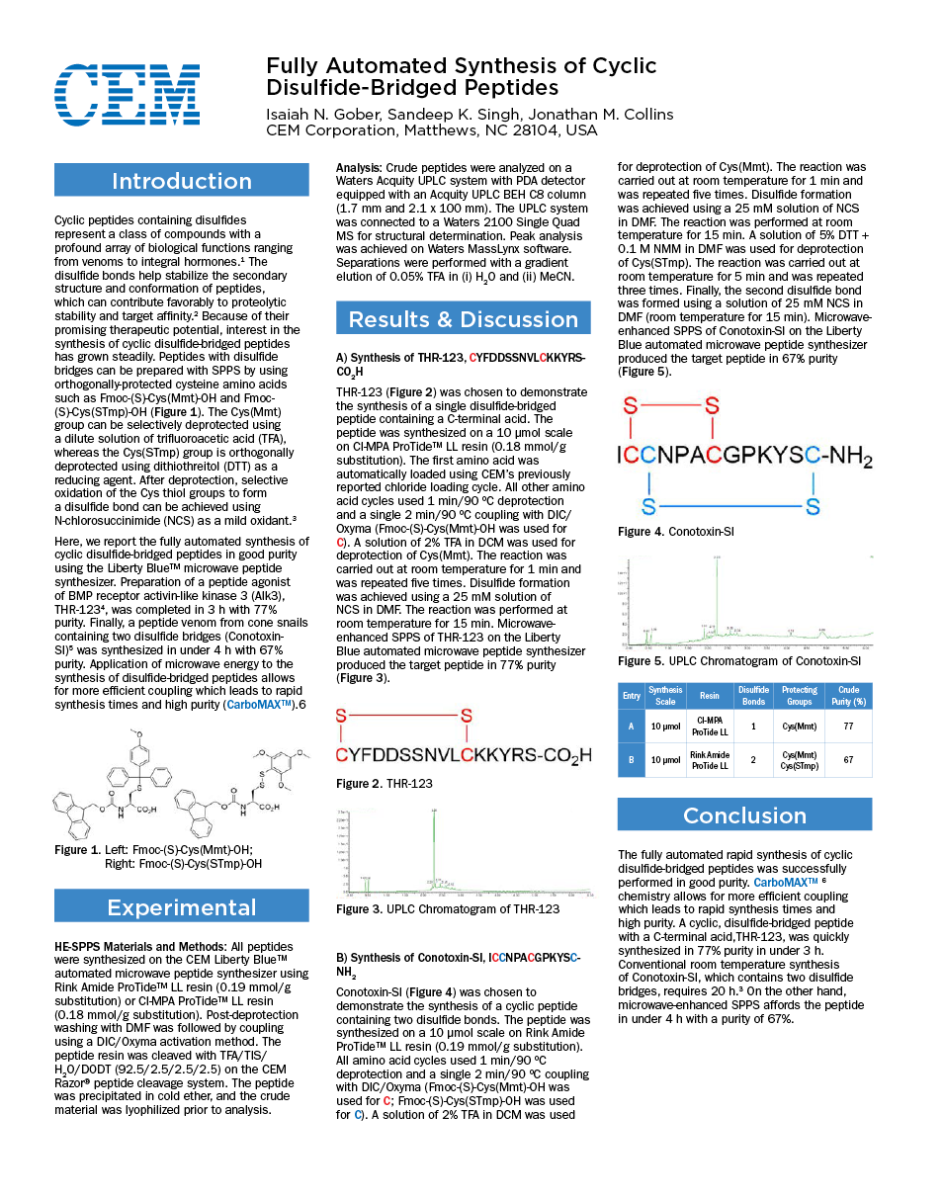Fully Automated Synthesis of Cyclic Disulfide-Bridged Peptides

Introduction
Cyclic peptides containing disulfides represent a class of compounds with a profound array of biological functions ranging from venoms to integral hormones. The disulfide bonds help stabilize the secondary structure and conformation of peptides, which can contribute favorably to proteolytic stability and target affinity. Because of their promising therapeutic potential, interest in the synthesis of cyclic disulfide-bridged peptides has grown steadily. Peptides with disulfide bridges can be prepared with SPPS by using orthogonally-protected cysteine amino acids such as Fmoc-(S)-Cys(Mmt)-OH and Fmoc- (S)-Cys(STmp)-OH. The Cys(Mmt) group can be selectively deprotected using a dilute solution of trifluoroacetic acid (TFA), whereas the Cys(STmp) group is orthogonally deprotected using dithiothreitol (DTT) as a reducing agent. After deprotection, selective oxidation of the Cys thiol groups to form a disulfide bond can be achieved using N-chlorosuccinimide (NCS) as a mild oxidant.
